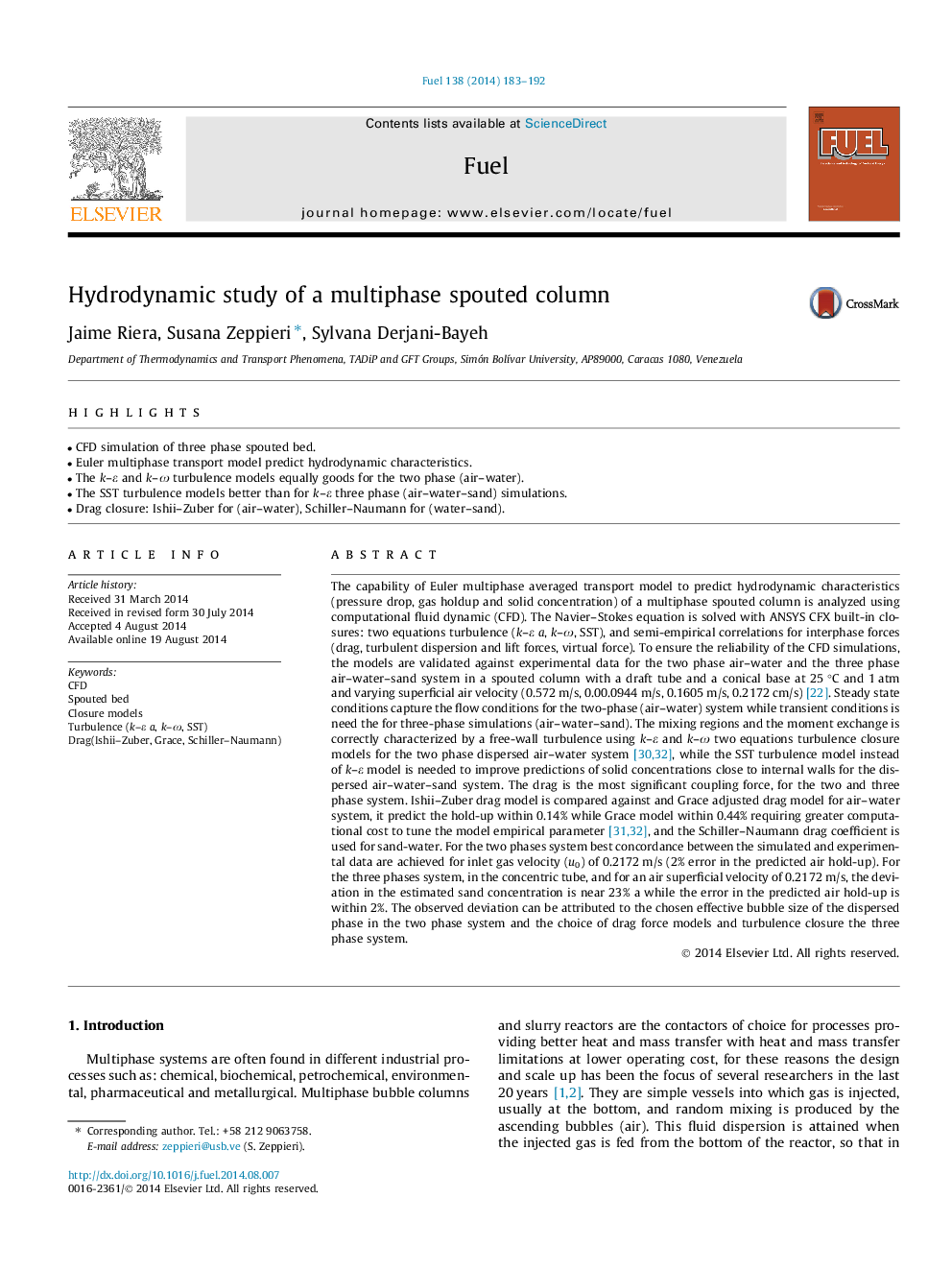| کد مقاله | کد نشریه | سال انتشار | مقاله انگلیسی | نسخه تمام متن |
|---|---|---|---|---|
| 206011 | 461135 | 2014 | 10 صفحه PDF | دانلود رایگان |
• CFD simulation of three phase spouted bed.
• Euler multiphase transport model predict hydrodynamic characteristics.
• The k–ε and k–ω turbulence models equally goods for the two phase (air–water).
• The SST turbulence models better than for k–ε three phase (air–water–sand) simulations.
• Drag closure: Ishii–Zuber for (air–water), Schiller–Naumann for (water–sand).
The capability of Euler multiphase averaged transport model to predict hydrodynamic characteristics (pressure drop, gas holdup and solid concentration) of a multiphase spouted column is analyzed using computational fluid dynamic (CFD). The Navier–Stokes equation is solved with ANSYS CFX built-in closures: two equations turbulence (k–ε a, k–ω, SST), and semi-empirical correlations for interphase forces (drag, turbulent dispersion and lift forces, virtual force). To ensure the reliability of the CFD simulations, the models are validated against experimental data for the two phase air–water and the three phase air–water–sand system in a spouted column with a draft tube and a conical base at 25 °C and 1 atm and varying superficial air velocity (0.572 m/s, 0.00.0944 m/s, 0.1605 m/s, 0.2172 cm/s) [22]. Steady state conditions capture the flow conditions for the two-phase (air–water) system while transient conditions is need the for three-phase simulations (air–water–sand). The mixing regions and the moment exchange is correctly characterized by a free-wall turbulence using k–ε and k–ω two equations turbulence closure models for the two phase dispersed air–water system [30] and [32], while the SST turbulence model instead of k–ε model is needed to improve predictions of solid concentrations close to internal walls for the dispersed air–water–sand system. The drag is the most significant coupling force, for the two and three phase system. Ishii–Zuber drag model is compared against and Grace adjusted drag model for air–water system, it predict the hold-up within 0.14% while Grace model within 0.44% requiring greater computational cost to tune the model empirical parameter [31] and [32], and the Schiller–Naumann drag coefficient is used for sand-water. For the two phases system best concordance between the simulated and experimental data are achieved for inlet gas velocity (u0) of 0.2172 m/s (2% error in the predicted air hold-up). For the three phases system, in the concentric tube, and for an air superficial velocity of 0.2172 m/s, the deviation in the estimated sand concentration is near 23% a while the error in the predicted air hold-up is within 2%. The observed deviation can be attributed to the chosen effective bubble size of the dispersed phase in the two phase system and the choice of drag force models and turbulence closure the three phase system.
Journal: Fuel - Volume 138, 15 December 2014, Pages 183–192
